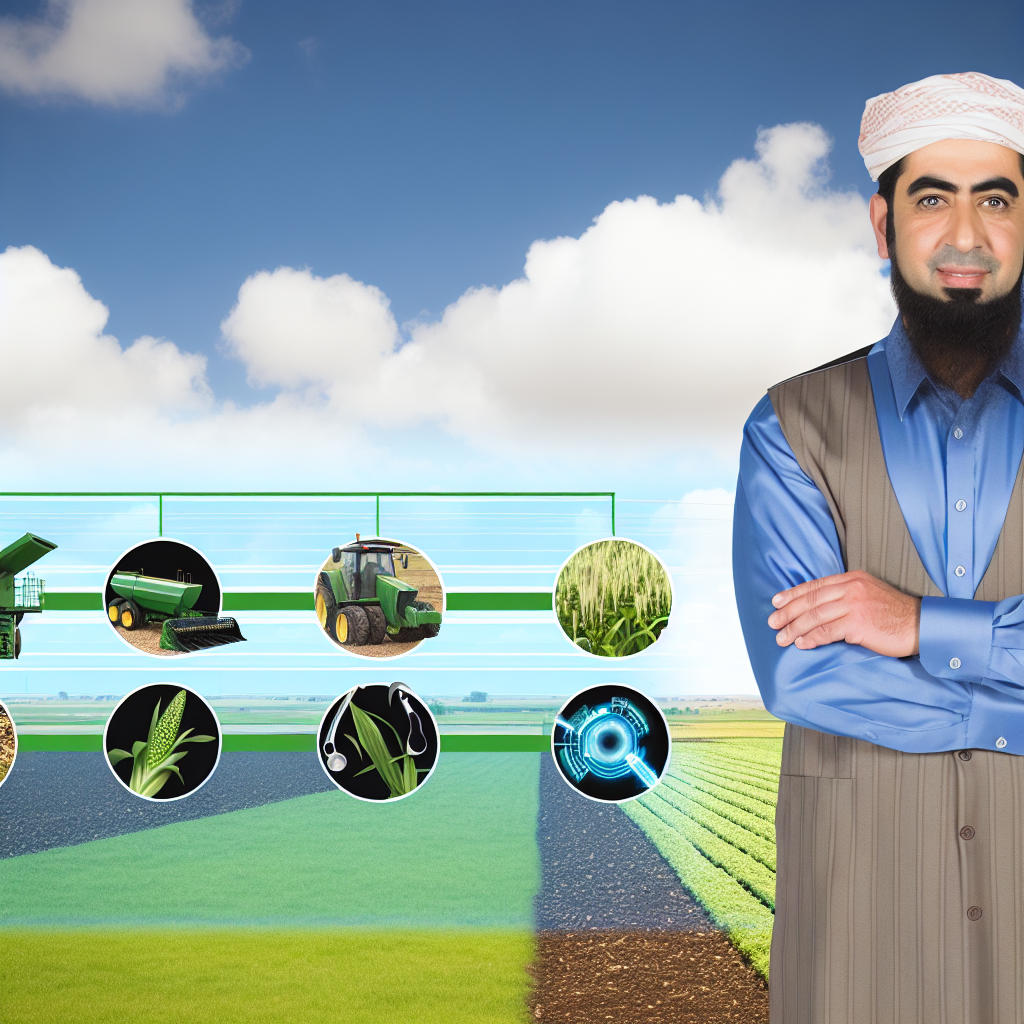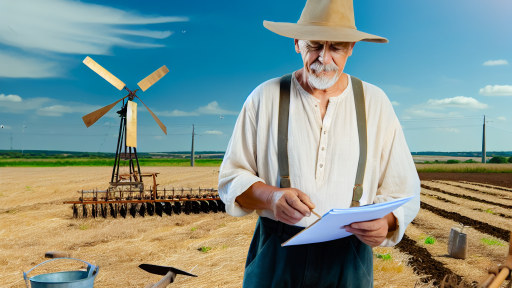Understanding Different Types of Farm Subsidies Available
Direct Payments
Direct payments provide farmers with financial support without requiring them to produce specific crops.
These payments are often based on historical production figures.
For instance, a farmer with a strong past output can receive recurring payments.
Price Support Programs
These programs guarantee a minimum price for certain crops.
Price supports help stabilize farmers’ income during market fluctuations.
As a result, these programs ensure farmers can cover production costs.
Commodity Programs
Commodity programs are designed to aid farmers growing specific staple crops.
These include corn, wheat, soybeans, and rice.
Moreover, these programs often involve both price supports and loans.
Conservation Programs
Conservation programs incentivize sustainable farming practices.
Farmers can receive funding for protecting natural resources.
This approach promotes biodiversity and soil conservation.
Insurance Subsidies
Insurance subsidies help farmers manage risk from natural disasters.
Crops can suffer from droughts, floods, and pests.
Thus, these subsidies make insurance more affordable for farmers.
Transform Your Agribusiness
Unlock your farm's potential with expert advice tailored to your needs. Get actionable steps that drive real results.
Get StartedResearch and Development Grants
Grants for research and development encourage innovation in farming techniques.
Farmers can access funds to explore new technologies.
These advancements can potentially increase productivity and sustainability.
Food Assistance Programs
Food assistance programs aim to ensure food security for low-income families.
They often involve purchasing surplus products from farmers.
This strategy helps stabilize prices while addressing nutritional needs in communities.
Eligibility Criteria for Farm Subsidies
Understanding Farm Subsidies
Farm subsidies are financial grants to support agricultural activities.
These programs help farmers expand their production capabilities.
In turn, they contribute to economic stability in rural communities.
Basic Eligibility Requirements
To qualify for farm subsidies, you must meet basic requirements.
Each program may have specific guidelines and criteria.
Typically, applicants must be engaged in farming or ranching.
A minimum level of production is often necessary.
Additionally, you may need to submit documentation of your operations.
Types of Farming Operations
Different types of farming operations can qualify for various subsidies.
These may include crop farming, livestock raising, and dairy production.
Smallholder farms also have specific programs available.
It is essential to identify which category your operation fits into.
Income and Asset Limits
Many subsidy programs impose income and asset limits.
Your farm’s income should fall within program parameters.
Generally, asset limits aim to assist those in financial need.
Be prepared to provide accurate financial statements.
Compliance with Agricultural Regulations
Compliance with federal and state regulations is crucial.
Participants often must adhere to specific agricultural practices.
Showcase Your Farming Business
Publish your professional farming services profile on our blog for a one-time fee of $200 and reach a dedicated audience of farmers and agribusiness owners.
Publish Your ProfileThese can include environmental regulations and safety standards.
Failure to follow these guidelines may disqualify you from receiving aid.
Application Process
Applying for farm subsidies involves completing specific forms.
Start by contacting your local agricultural office for guidance.
They can provide information about available programs and deadlines.
Be thorough and accurate in your applications.
Missing details can lead to delays or rejections.
Steps to Apply for Subsidies: A Guide for New Farmers
Research Available Subsidies
Begin by exploring the types of subsidies available in your area.
Look for national, state, and local programs that may benefit your farm.
Government websites often provide detailed information about these programs.
Additionally, check for grants through agricultural organizations.
Identifying the right subsidies helps prioritize your application efforts.
Gather Necessary Documentation
Prepare all required documentation before starting your application.
Common documents include tax returns, business plans, and crop reports.
Ensure you have your farm’s financial records organized and accessible.
Obtaining accurate and current information enhances your application’s credibility.
Contact Local Agricultural Offices
Reach out to local agricultural offices for guidance.
These offices can provide personalized assistance tailored to your needs.
Ask about specific requirements and expectations for the subsidy application.
Establishing a relationship with these officials can be beneficial.
Complete the Application Form
Follow the instructions carefully while filling out the application form.
Be thorough and provide all necessary information as required.
Double-check for any errors or omissions before submission.
Clear and accurate applications have a higher chance of being approved.
Submit Your Application
Submit your application before the deadline to avoid missing out.
Keep a copy of your application for your records.
If possible, confirm receipt of your application with the relevant office.
This step provides reassurance that your application is under review.
Follow Up on Your Application
Check the status of your application after a few weeks.
Contact the subsidy administration office for updates as needed.
Persistence shows your commitment to the process and your farm.
Be prepared to provide additional information or documentation if requested.
Utilize Approved Funds Wisely
Once approved, use the funds according to the guidelines provided.
Ensure you keep records of how the funds are spent.
Following the rules will help in retention of future subsidies.
Effective use of funds can lead to increased farm productivity.
See Related Content: Understanding USDA Farm Subsidy Programs
Maximizing Your Subsidy Amount
Understanding Farm Subsidies
Farm subsidies provide essential support for agricultural operations.
They help stabilize income for farmers facing volatile markets.
Subsidies also incentivize farming practices that benefit the environment.
Showcase Your Farming Business
Publish your professional farming services profile on our blog for a one-time fee of $200 and reach a dedicated audience of farmers and agribusiness owners.
Publish Your ProfileResearch Available Subsidies
Begin by researching the various subsidies you may qualify for.
Check both federal and state program offerings for updates.
Use resources like the USDA website for comprehensive information.
Consider local agricultural organizations for tailored advice.
Keep Accurate Records
Maintain detailed records of your farming practices and expenses.
Accurate documentation supports your subsidy applications.
Consider using digital tools for efficient record-keeping.
Regularly update your records to reflect current activities.
Engage with Local Agricultural Offices
Connect with your local agricultural office for guidance.
They provide insights on application deadlines and workshops.
Build relationships with local extension agents for personalized help.
Complete Necessary Applications
Carefully complete all subsidy applications required.
Double-check your forms for accuracy and completeness.
Submit applications before the deadline to avoid penalties.
Stay Informed About Policy Changes
Stay updated on changes in subsidy policies and regulations.
Subscribe to newsletters from agricultural associations.
Participate in industry seminars to learn about new developments.
Explore Additional Funding Sources
Investigate supplementary funding options available to farmers.
Look into grants, loans, and co-investment opportunities.
Diversifying funding sources can provide extra financial stability.
Consider Long-term Sustainability
Focus on sustainable practices to enhance your eligibility for subsidies.
Implement strategies that promote soil health and biodiversity.
Demonstrating sustainable practices can improve your funding chances.
Network with Other Farmers
Connect with fellow farmers to share best practices.
Participate in local farming groups to stay engaged.
Collaboration can lead to new insights and support systems.
Gain More Insights: Financial Aid Options for Sustainable Farming
Common Mistakes to Avoid When Applying for Farm Subsidies
Insufficient Research
Many applicants do not conduct enough research before applying.
Understanding the specific requirements is crucial.
Additionally, applicants should be aware of available programs.
Consequently, lacking knowledge can lead to missed opportunities.
Failure to Meet Deadlines
Applicants often overlook essential deadlines.
Missing a deadline can disqualify an application entirely.
It is vital to keep a schedule of important dates.
Furthermore, being late shows a lack of organization.
Inaccurate Information Submission
Submitting incorrect information is a common mistake.
Inaccuracies can result in application denials.
Double-check all figures and data for accuracy.
Moreover, providing false information can lead to penalties.
Neglecting to Seek Assistance
Some farmers hesitate to seek help during the application process.
Showcase Your Farming Business
Publish your professional farming services profile on our blog for a one-time fee of $200 and reach a dedicated audience of farmers and agribusiness owners.
Publish Your ProfileConsulting with experts can clarify complex details.
It can also improve the overall quality of the application.
Additionally, local agricultural offices often provide valuable resources.
Ignoring Follow-Up Procedures
Many applicants forget to follow up after submission.
Checking the status of an application is essential.
Furthermore, it shows commitment to the process.
Therefore, staying informed can help you address issues timely.
Learn More: The Latest Agricultural Subsidies: What Farmers Need to Know

The Role of Agricultural Departments and Local Agencies in Subsidy Approvals
Understanding Agricultural Departments
Agricultural departments play a vital role in the subsidy process.
They provide guidance to farmers regarding available subsidies.
Additionally, they help farmers understand eligibility requirements.
These departments often facilitate application procedures.
Impact of Local Agencies
Local agencies also contribute significantly to subsidy approvals.
They serve as a bridge between farmers and agricultural departments.
Moreover, they conduct assessments to determine local needs.
Local agencies ensure that subsidies reach the most deserving farmers.
Navigating the Application Process
Farmers should familiarize themselves with application processes.
Each subsidy program may have different requirements.
Staying organized can simplify gathering necessary documentation.
Furthermore, local agency personnel can provide valuable assistance.
Importance of Timely Applications
Submitting applications on time is crucial for securing subsidies.
Deadlines vary depending on the program and local requirements.
Farmers must prioritize understanding these timelines.
Moreover, early submission often leads to better chances of approval.
Keeping Informed About Changes
Regulations surrounding agricultural subsidies may change frequently.
Farmers should regularly check updates from agricultural departments.
Engaging in workshops or informational sessions can be beneficial.
This proactive approach helps farmers stay compliant and competitive.
Explore Further: How to Apply for Farm Subsidies Successfully
Utilizing Technology and Data for Better Subsidy Management
Importance of Data in Agriculture
Data plays a crucial role in modern agriculture.
It helps farmers make informed decisions.
Additionally, data increases the efficiency of subsidy applications.
Utilizing accurate data leads to better financial planning.
Farmers can track expenses and revenues more effectively.
Technological Tools for Data Collection
Various technological tools exist to support data collection.
Drones capture aerial images of farmlands.
This technology allows for real-time monitoring of crops.
Moreover, sensors collect data on soil moisture levels.
Farm management software aggregates this data seamlessly.
Analyzing Data for Better Decisions
Data analysis transforms raw information into actionable insights.
Showcase Your Farming Business
Publish your professional farming services profile on our blog for a one-time fee of $200 and reach a dedicated audience of farmers and agribusiness owners.
Publish Your ProfileFarmers can identify trends in crop yields over time.
This analysis allows them to optimize planting schedules.
Furthermore, predictive analytics helps forecast weather patterns.
Such forecasts guide farmers in risk management strategies.
Integrating Technology with Subsidy Programs
Integration of technology improves access to subsidies.
Farmers can submit applications digitally, reducing paperwork.
Automated systems help track deadlines and requirements.
This efficiency leads to higher success rates in applications.
Additionally, utilizing data can strengthen proposals significantly.
Case Studies of Successful Implementation
Several farmers have successfully utilized technology for subsidies.
Maria Lopez, a soybean farmer, implemented sensor technology.
Her accurate data collection resulted in a 25% increase in her subsidy approval rate.
Similarly, James Carter used drones for crop assessment.
His ability to present detailed reports led to larger grants.
Success Stories: Farmers Who Successfully Maximized Their Subsidies
Innovative Techniques from the Johnson Family Farm
The Johnson family implemented agritourism practices to boost income.
They used their farm’s scenic landscapes to attract visitors.
This approach increased their revenue without sacrificing production.
Consequently, they received substantial subsidies for their innovative techniques.
Precision Agriculture at Greenway Farms
Greenway Farms adopted precision agriculture to improve efficiency.
This method optimized resource usage, reducing waste and costs.
Moreover, it resulted in higher crop yields each season.
The farm’s success caught the attention of local agricultural officials.
As a result, they gained access to significant government subsidies.
Community Collaboration at Meadowview Ranch
Meadowview Ranch formed a cooperative with neighboring farms.
By pooling resources, they shared equipment and expenses effectively.
This collaboration led to sustainable practices and shared knowledge.
Subsequently, they qualified for joint subsidy programs, enhancing financial support.
Eco-Friendly Practices at Willow Creek Farm
Willow Creek Farm embraced organic farming methods.
They focused on sustainability and soil health to attract subsidies.
This practice not only improved their land but also increased marketability.
Their success in eco-friendly farming garnered accolades and financial rewards.
Technological Advancements at River Valley Agriculture
River Valley Agriculture invested in modern farming technology.
Utilizing drones and sensors enhanced their productivity and monitoring.
These advancements resulted in more precise farming operations.
Ultimately, they accessed significant grants for technology upgrades.
Additional Resources
Cutting Federal Farm Subsidies | Cato Institute
Agricultural Producer Subsidies: Navigating Challenges and Policy …




